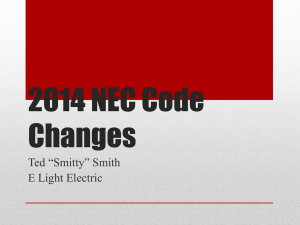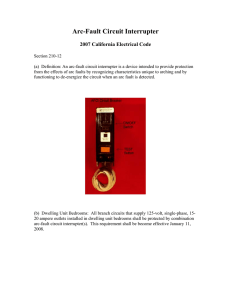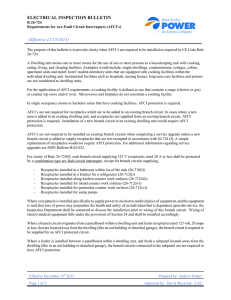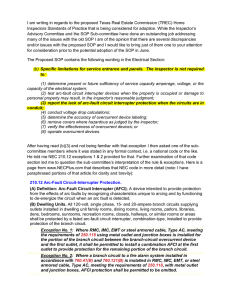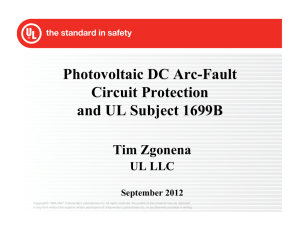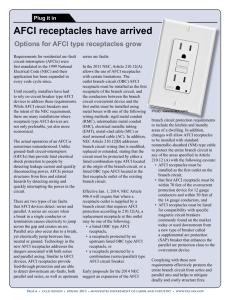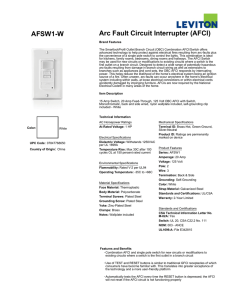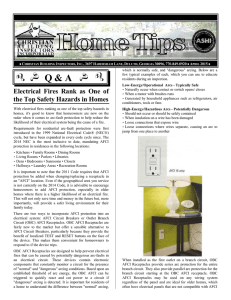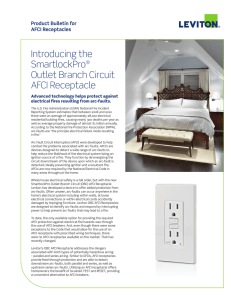Requirements for Arc-Fault Circuit Interrupters (AFCI=s)
advertisement
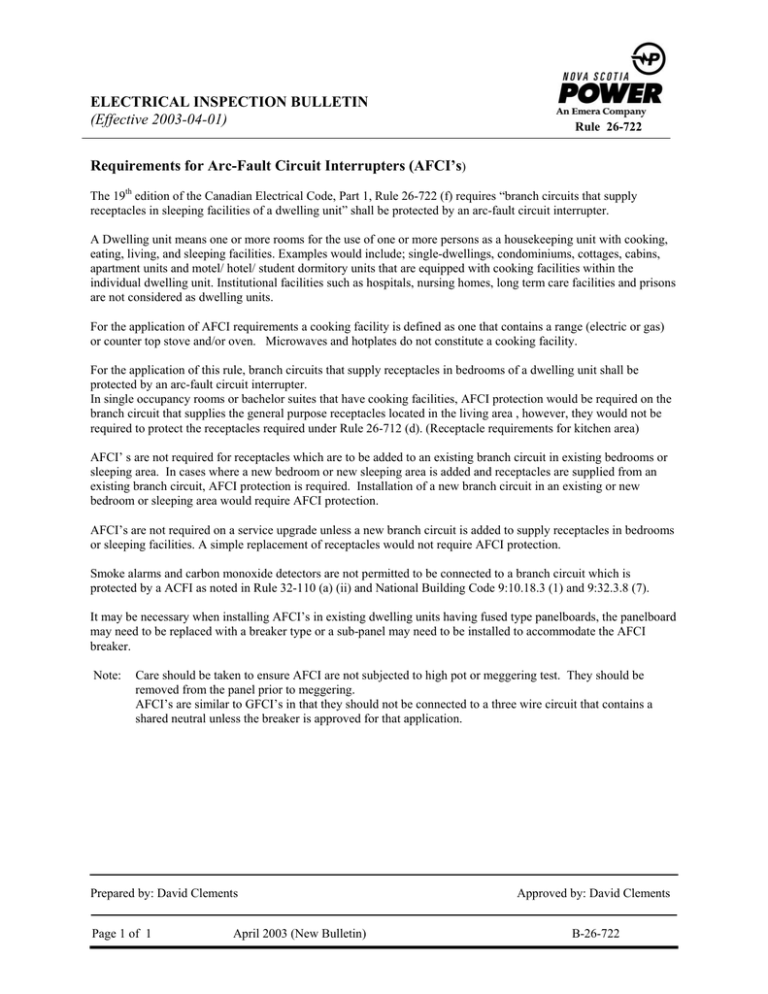
ELECTRICAL INSPECTION BULLETIN (Effective 2003-04-01) Rule 26-722 Requirements for Arc-Fault Circuit Interrupters (AFCI’s) The 19th edition of the Canadian Electrical Code, Part 1, Rule 26-722 (f) requires “branch circuits that supply receptacles in sleeping facilities of a dwelling unit” shall be protected by an arc-fault circuit interrupter. A Dwelling unit means one or more rooms for the use of one or more persons as a housekeeping unit with cooking, eating, living, and sleeping facilities. Examples would include; single-dwellings, condominiums, cottages, cabins, apartment units and motel/ hotel/ student dormitory units that are equipped with cooking facilities within the individual dwelling unit. Institutional facilities such as hospitals, nursing homes, long term care facilities and prisons are not considered as dwelling units. For the application of AFCI requirements a cooking facility is defined as one that contains a range (electric or gas) or counter top stove and/or oven. Microwaves and hotplates do not constitute a cooking facility. For the application of this rule, branch circuits that supply receptacles in bedrooms of a dwelling unit shall be protected by an arc-fault circuit interrupter. In single occupancy rooms or bachelor suites that have cooking facilities, AFCI protection would be required on the branch circuit that supplies the general purpose receptacles located in the living area , however, they would not be required to protect the receptacles required under Rule 26-712 (d). (Receptacle requirements for kitchen area) AFCI’ s are not required for receptacles which are to be added to an existing branch circuit in existing bedrooms or sleeping area. In cases where a new bedroom or new sleeping area is added and receptacles are supplied from an existing branch circuit, AFCI protection is required. Installation of a new branch circuit in an existing or new bedroom or sleeping area would require AFCI protection. AFCI’s are not required on a service upgrade unless a new branch circuit is added to supply receptacles in bedrooms or sleeping facilities. A simple replacement of receptacles would not require AFCI protection. Smoke alarms and carbon monoxide detectors are not permitted to be connected to a branch circuit which is protected by a ACFI as noted in Rule 32-110 (a) (ii) and National Building Code 9:10.18.3 (1) and 9:32.3.8 (7). It may be necessary when installing AFCI’s in existing dwelling units having fused type panelboards, the panelboard may need to be replaced with a breaker type or a sub-panel may need to be installed to accommodate the AFCI breaker. Note: Care should be taken to ensure AFCI are not subjected to high pot or meggering test. They should be removed from the panel prior to meggering. AFCI’s are similar to GFCI’s in that they should not be connected to a three wire circuit that contains a shared neutral unless the breaker is approved for that application. Prepared by: David Clements Page 1 of 1 April 2003 (New Bulletin) Approved by: David Clements B-26-722
